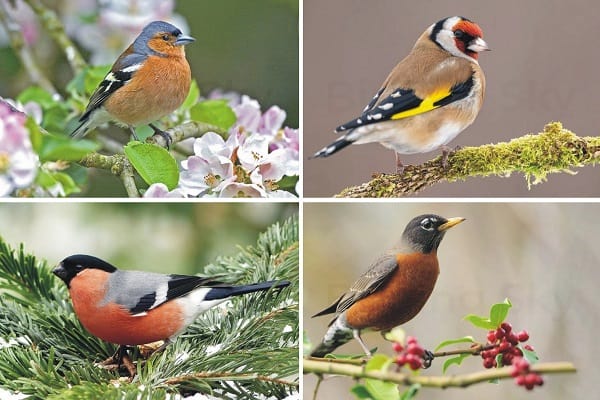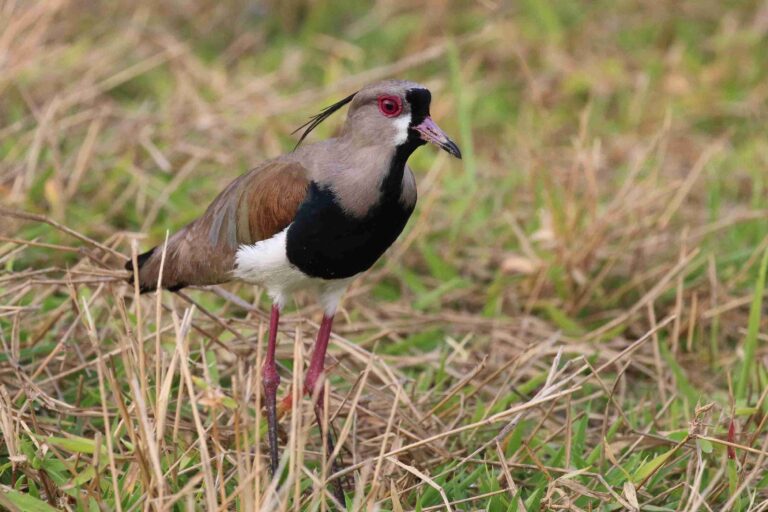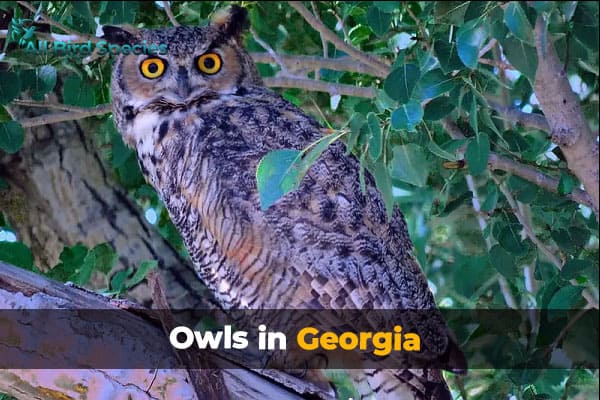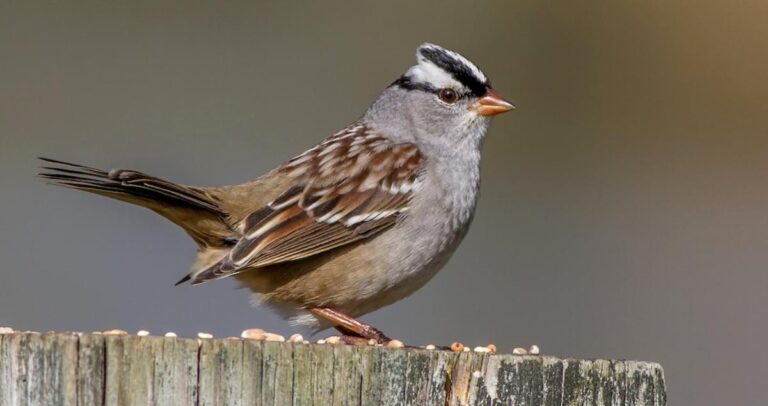7 Common Types of Birds Found in Spain (With Pictures)
Did you know Spain has over 600 birds of species? It’s one of the richest countries in Europe for birds. This variety comes from its different landscapes like mountains, coastlines, forests, and wetlands.
In this article, you’ll learn about 12 common bird species in Spain. You’ll also see amazing pictures to help you spot these birds in their natural homes.
Common Bird Species in Spain
Spain is home to a wide variety of birds. When you look at the birds in Spain list, you’ll see birds like the Barn Swallow and the Griffon Vulture. Each bird has special traits that make Spain’s bird life rich and colorful.
Overview of Avian Diversity
Spain’s bird life is incredibly diverse. You can see different birds in different places. Watching a Griffon Vulture soar or a Barn Swallow fly is amazing. Knowing how to identify these birds makes their beauty even more special.
Essential Characteristics of Spanish Birds
To spot Spanish birds, you need to know what to look for. Important bird features include:
- Colorful plumage
- Distinctive size
- Unique vocalizations
By paying attention to these traits, birdwatching becomes more fun. Birds have different colors and sizes that help tell them apart. Learning about these features helps you enjoy Spain’s wildlife even more.
1. Barn Swallow
- Scientific Name: Hirundo rustica
- Size: 16–19 cm (6.3–7.5 in)
- Weight: 11–20 g (0.39–0.71 oz)
- Lifespan: Up to 8 years in the wild
- Diet: Primarily insects, which they catch in flight.
The Barn Swallow is a delightful bird often seen in Spain’s skies. It has striking metallic blue feathers and an elegant tail. This makes it a favorite among bird watchers and casual observers.
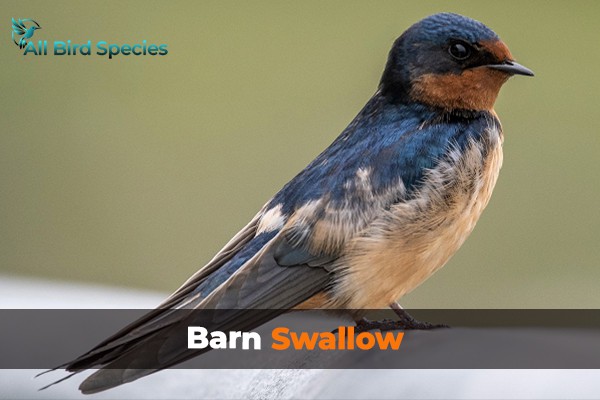
Known for their agile flight, Barn Swallows show impressive acrobatics. They hunt for insects, adding to their charm.
These birds often build their nests in human habitats, like under eaves and bridges. This adaptability makes them common in both urban and rural Spain. They prefer open spaces for feeding and gathering.
Their nests are made from mud and plants. This creates a sturdy home for their young.
During breeding season, Barn Swallows engage in fascinating behaviors. Males do aerial displays to attract females. Both parents then take turns feeding the chicks and keeping the nest clean.
Understanding the Barn Swallow’s adaptability shows its key role in the ecosystem. They help control pests by eating insects. This benefits agriculture and human environments. Watching this beautiful species, think about its amazing journey from migration to nesting near you.
| Feature | Description |
|---|---|
| Coloration | Metallic blue upper body with a white underbelly |
| Wingspan | About 31 to 34 cm |
| Nesting Behavior | Nests built from mud and grass, often in human structures |
| Diet | Primarily insects, such as flies and beetles |
| Migration | Spring and autumn migrations to Africa and back |
~Iconic Birds of Prey in Spain~
Spain is home to many raptors that amaze us with their beauty and grace. This section focuses on three iconic birds: Montagu’s Harrier, Griffon Vulture, and Eurasian Sparrowhawk. Each bird has unique traits and is crucial to the ecosystem.
2. Montagu’s Harrier
- Scientific Name: Circus pygargus
- Size: 40–50 cm (16–20 in)
- Weight: 250–500 g (8.8–17.6 oz)
- Lifespan: Up to 10 years in the wild
- Diet: Primarily small mammals, birds, and insects.
The Montagu’s Harrier is a striking raptor found mainly in agricultural fields. It has grey and brown feathers that make it stand out when it flies. You might see it hunting by gliding low over the ground for small mammals and birds.

Its ability to live in farmland makes it a symbol of raptors in Spain. It shows how important it is to know how to identify birds.
3. Griffon Vulture
- Scientific Name: Gyps fulvus
- Size: 93–110 cm (37–43 in)
- Weight: 6.5–11 kg (14.3–24.3 lb)
- Lifespan: Up to 40 years in the wild
- Diet: Primarily scavenger, feeding on carrion.
The Griffon Vulture is one of Spain’s most magnificent scavengers. It soars high in the sky with its impressive wingspan. These vultures mostly eat carrion.
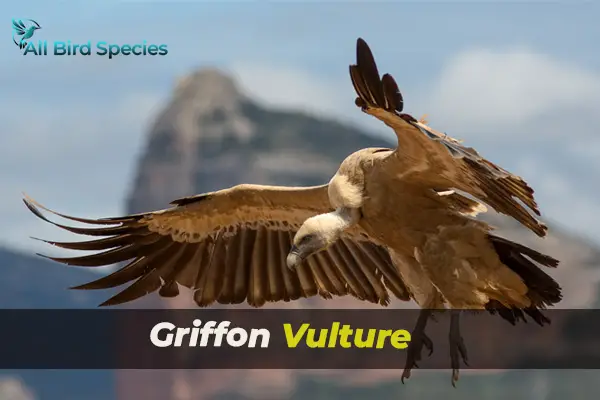
You can see them gathering near cliffs and mountains. Their feeding habits are key to understanding their role in keeping biodiversity. They help by getting rid of decaying matter.
4. Eurasian Sparrowhawk
- Scientific Name: Accipiter nisus
- Size: 29–38 cm (11–15 in)
- Weight: 150–300 g (5.3–10.6 oz)
- Lifespan: Up to 10 years in the wild
- Diet: Primarily small birds and mammals.
The Eurasian Sparrowhawk is known for its stealth and agility. It can be found in many places, including cities. Its hunting style, with quick bursts of speed, shows its skill as a bird of prey.
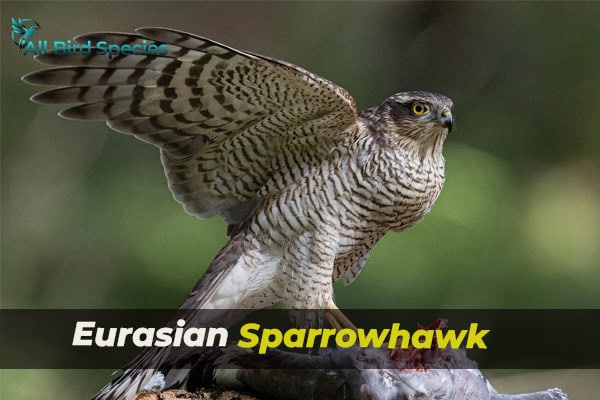
Watching this raptor gives us a peek into nature’s balance. It shows how predators and prey interact.
| Bird Species | Habitat | Feeding Behavior | Conservation Status |
|---|---|---|---|
| Montagu’s Harrier | Agricultural fields | Hunts small mammals and birds | Near Threatened |
| Griffon Vulture | Cliffs and mountains | Scavenges carrion | Least Concern |
| Eurasian Sparrowhawk | Various, including urban | Preys on smaller birds | Stable |
~Water Birds of Spain~
Spain’s landscapes are a home for many water birds. The Great White Egret, Little Egret, and Caspian Tern are among the most seen. Bird lovers enjoy watching these birds in wetlands and by the sea.
5. Great White Egret
- Scientific Name: Ardea alba
- Size: 85–102 cm (33–40 in)
- Weight: 700–1,500 g (1.5–3.3 lb)
- Lifespan: Up to 15 years in the wild
- Diet: Primarily fish, amphibians, and small invertebrates.
The Great White Egret is a beautiful sight in Spain’s wetlands. It has a long neck and is very tall. It hunts fish in shallow water with its sharp eyes and quick moves.
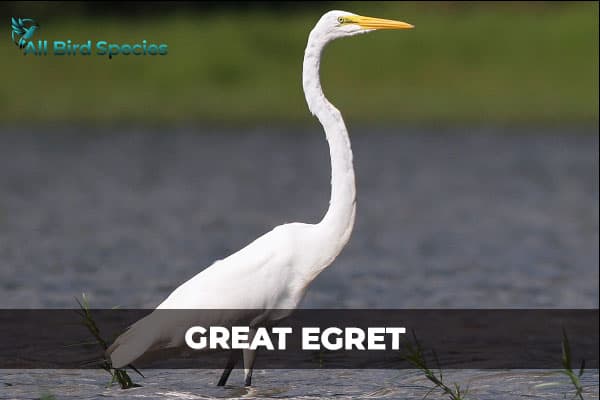
Its white feathers stand out against green marshes and ponds. This makes it a favorite among birdwatchers.
6. Little Egret
- Scientific Name: Egretta garzetta
- Size: 55–65 cm (22–26 in)
- Weight: 400–600 g (0.88–1.32 lb)
- Lifespan: Up to 15 years in the wild
- Diet: Primarily fish, crustaceans, and small invertebrates.
The Little Egret birds of Spain is also very charming. It is smaller than the Great White Egret but has its own beauty. It moves fast to catch fish, frogs, and crustaceans.
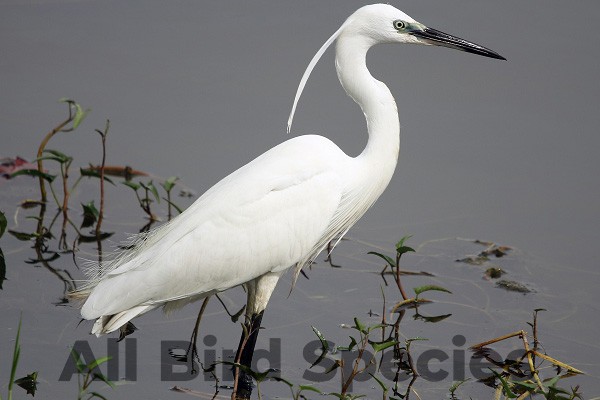
Moreover, It can live in many places, like estuaries and rice fields. This shows it can adapt to different environments.
7. Caspian Tern
- Scientific Name: Hydroprogne caspia
- Size: 48–66 cm (19–26 in)
- Weight: 0.9–2.0 kg (2.0–4.4 lb)
- Lifespan: Up to 30 years in the wild
- Diet: Primarily fish, which they catch by diving.
The Caspian Tern is often seen along Spain’s coasts. Also, It has a black cap and a big wingspan. It dives deep to catch fish, showing off its hunting skills.
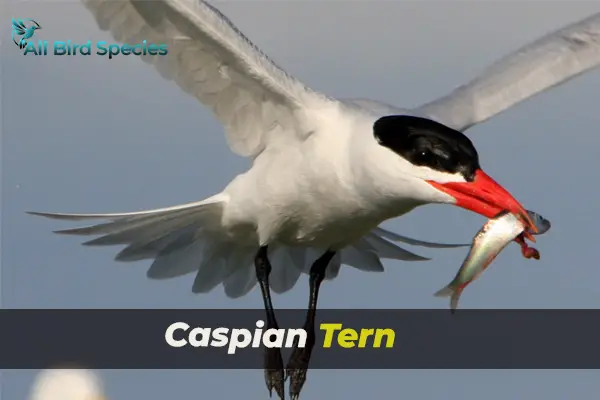
It loves the sea and helps keep the coast healthy. Its travels show how connected Spain’s birds are.
Seasonal Migratory Birds
The seasons change, and so does the birds life in Spain. Spring brings birds with bright colors and songs. This marks the start of their breeding season. Knowing their migration patterns lets us see the variety of birds each year.
Many things affect their travels, like the weather and where food is.
Spring Migration Patterns
When winter ends, many birds return to Spain to have their young. They come from Africa to Spain’s wetlands, forests, and grasslands. Birds like:
- Swallows
- Waders
- Hirundines
Spring is a time of beauty as these birds settle and build their nests.
Autumn Returns and Their Significance
In autumn, birds start their journey south to avoid cold weather. This usually happens from late September to November. The exact time and path vary for each bird based on weather and daylight.
Some birds you might see include:
- Common Starlings
- Lapwings
- Europan Robins
Learning about autumn migration shows how important these trips are. They show how all ecosystems are connected.
| Migration Season | Key Species | Notable Locations |
|---|---|---|
| Spring Migration | Swallows, Waders, Hirundines | Wetlands, Forests, Grasslands |
| Autumn Migration | Common Starlings, Lapwings, European Robins | Coastal Areas, Agricultural Fields |
Best Birdwatching Locations in Spain
Spain is a top spot for birdwatching in Europe. It has many beautiful places to see different birds. Doñana National Park, Ebro Delta, and Monfragüe National Park are the best places to see birds.
Doñana National Park
The Doñana National Park is a must-see for birdwatchers. It’s a UNESCO World Heritage site with wetlands and forests. Here, you can see the Spanish Imperial Eagle and many migratory birds.
The best times to visit are spring and autumn. These seasons offer the most birdwatching opportunities, and you’ll see many different birds during these times.
Ebro Delta
The Ebro Delta is known for its wetlands. These wetlands are very important for many bird species. It’s a key stop for migratory birds, attracting waterfowl and shorebirds.
Birdwatchers can explore the marshes and coastal lagoons, where they can see birds like the Great Bittern and herons. The Ebro Delta is also home to unique plants and animals.
Monfragüe National Park
Monfragüe National Park is famous for its beautiful landscapes and birds. It’s especially good for seeing raptors like the Griffon Vulture and Eurasian Sparrowhawk. There are many lookout points for great views and birdwatching.
The park’s mountains and different habitats make it perfect for birdwatching. You can see many birds in their natural home here.
| Location | Main Attractions | Best Time to Visit |
|---|---|---|
| Doñana National Park | Spanish Imperial Eagle, diverse habitats | Spring and Autumn |
| Ebro Delta | Rich wetland ecosystems, migratory shorebirds | Year-round, peak in Spring and Autumn |
| Monfragüe National Park | Raptor locations, scenic landscapes | Spring and Autumn |
Conservation of Bird Species in Spain
Bird conservation in Spain is key to protecting its amazing bird diversity. Many efforts focus on saving habitats where endangered birds live. Local groups, governments, and bird lovers work together to keep ecosystems healthy.
Climate change and habitat loss are big dangers for birds. Spain is planting more trees and setting up protected places to fight these. These safe spots help birds nest and find food.
Many programs teach people why saving birds is important. It’s vital to get everyone involved in wildlife care. You can help by joining local bird-saving efforts and pushing for laws that protect birds and their homes.
| Conservation Strategy | Description | Target Species |
|---|---|---|
| Habitat Restoration | Rebuilding and preserving natural habitats for nesting and feeding. | Griffon Vulture, Montagu’s Harrier |
| Climate Resilience Projects | Implementing initiatives to buffer bird populations against climate change effects. | Endangered species |
| Public Awareness Campaigns | Educating communities about the importance of bird conservation. | All bird species |
Read More🐦Related Articles:
- Black Birds In Florida
- Spiritual Meaning of Birds Chirping at 3am
- Hawks In Georgia
- Small Birds with Long Beaks
- Hawks in Illinois
- Sparrows in Ohio
Final Word
Exploring Spain’s birdwatching world is truly magical. Thanks to its different places and weather, the country’s birds are amazing. Birdwatching here is more than a hobby; it’s a memorable adventure.
Every bird in Spain has its own story. Learning about them makes us appreciate their beauty and strength more, making birdwatching even more special.
Watching birds in Spain also teaches us to protect their homes. We must help keep their habitats safe so that future generations can enjoy seeing these birds.
Spain’s bird diversity is a treasure for all nature lovers. Whether you’re new to birdwatching or have been doing it for years, seeing Spain’s birds is unforgettable. Let’s explore the world of birds together and work to keep them safe.
Frequently Asked Questions
Q1: What is the most common bird in Spain?
The most common bird in Spain is the house sparrow (Passer domesticus).
Q2: What bird is native to Spain?
The Spanish imperial eagle (Aquila adalberti) is native to Spain.
Q3: What are the bright blue birds in Spain?
The bright blue bird in Spain is the European roller (Coracias garrulus).
Q4: What is the national bird of Spain?
The national bird of Spain is the Spanish imperial eagle (Aquila adalberti).
Q5: What is a large white and black bird in Spain?
Spain’s large white and black bird is the Spanish ibex (Capra pyrenaica).

